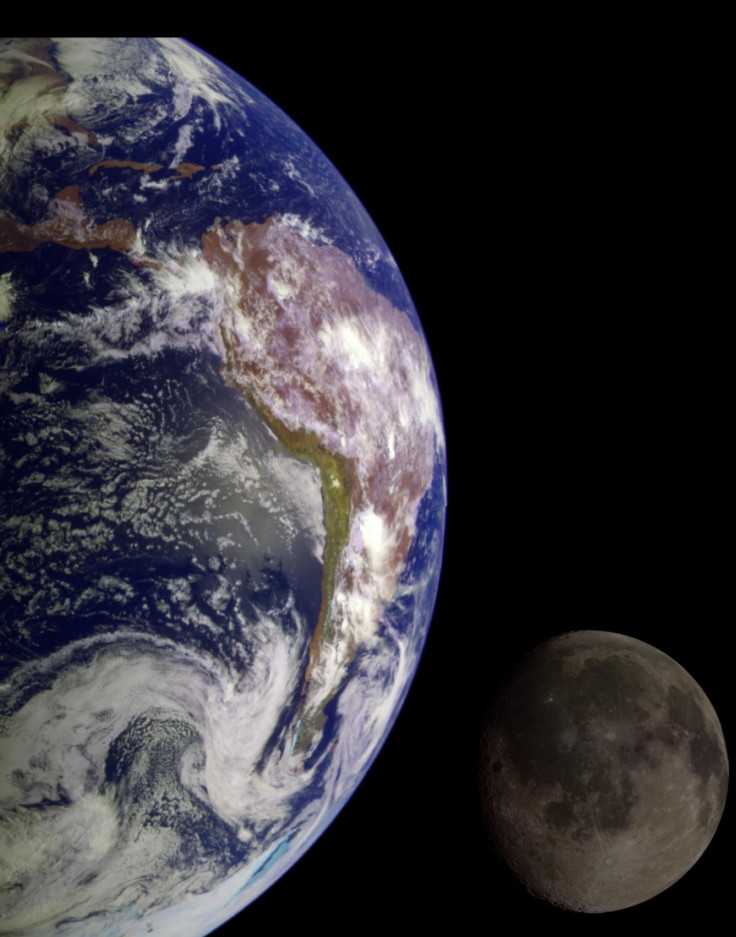Nasa finds India's lost Chandrayaan-1 spacecraft missing for 8 years orbiting the moon
The Indian spacecraft was last heard from in August 2009, before disappearing into space.

Nasa has found an Indian spacecraft that went missing eight years ago, orbiting the moon. The space agency rediscovered Chandrayaan-1, India's lunar satellite, which was launched by the Indian Space Research Organisation (Isro) in October 2008.
Nasa's Earth-based interplanetary radars detected signals from Chandrayaan-1, which was found orbiting the moon. However, Nasa scientists say that finding the Isro spacecraft was not easy, especially given how tiny it is, compared to other satellites. Chandrayaan-1 was not the only spacecraft that Nasa came upon. The space agency spotted its own Lunar Reconnaissance Orbiter [LRO], which was also orbiting the moon.
"We have been able to detect Nasa's Lunar Reconnaissance Orbiter [LRO] and the Indian Space Research Organisation's Chandrayaan-1 spacecraft in lunar orbit with ground-based radar," JPL radar scientist Marina Brozovic said in a statement. "Finding LRO was relatively easy, as we were working with the mission's navigators and had precise orbit data where it was located. Finding India's Chandrayaan-1 required a bit more detective work because the last contact with the spacecraft was in August of 2009."
Despite Nasa having used the interplanetary radar to observe tiny asteroids millions of miles away from Earth, scientists were uncertain about its ability to detect India's lunar satellite.
Nasa explained that finding a "derelict spacecraft" that was as far away from the Earth as the moon and which was not tracked for years before can be "tricky". This is because the moon is "riddled with mascons", which are basically areas that have higher than usual gravitational pull, that can in turn "dramatically affect a spacecraft's orbit over time, and even cause it to have crashed into the moon".
How did Nasa find the tiny Indian spacecraft?
Nasa scientists came up with predictions on where Chandrayaan-1 could have ended up based on data calculations of where it was last heard from. Nasa estimated that the spacecraft would be circling around 200 kms (120 miles) above the moon.
Scientists then beamed up microwaves towards the Moon's north pole using Nasa's Goldstone Deep Space Communications Complex in California, and waited to see if the lost spacecraft made contact with the laser beam. Nasa scientists then detected a small spacecraft crossing the path of the laser beams twice in around four hours, which matched the amount of time it would take Chandrayaan-1 to complete an orbit and return to the same position above the moon.
Nasa scientists also determined that Isro's spacecraft had barely shifted course in the eight years that it was floating across space by itself.
"It turns out that we needed to shift the location of Chandrayaan-1 by about 180 degrees, or half a cycle from the old orbital estimates from 2009," said Ryan Park, the manager of JPL's Solar System Dynamics group, who delivered the new orbit back to the radar team. "But otherwise, Chandrayaan-1's orbit still had the shape and alignment that we expected."
Nasa's new radar techniques have paved the way for a "a unique new capability" and will likely come in useful for future missions into space.
More about Chandrayaan-1
Chandrayaan-1 was India's first mission to the moon and was designed for geological and chemical mapping. Most notably, the lunar satellite came with an impactor which was deliberately released in November 2008 to crash into the Moon. The crash resulted in massive amounts of moon dust blowing up, which scientists then studied and found the first evidence of water ice on the moon's surface, according to a report by ScienceAlert. The spacecraft lost contact with Isro as planned, after completing its mission in 10 months.
© Copyright IBTimes 2025. All rights reserved.






















